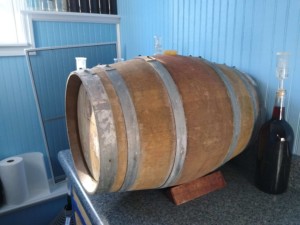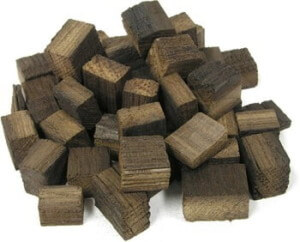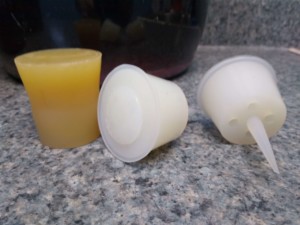Winemaking 101 – Episode 6 B – 2019 second run, continued
The Wine Making Process Continues! (Slowly)
After a few weeks, the wine dropped sediment as expected. It’s typical to drop a lot of sediment in the first few weeks — this includes yeast cells, grape solids, and the like. After a few week, I racked the wine to remove most of the sediment, which can produce off flavors if left with the wine.
The next racking is typically 3 months later.
The Barrel!!!

On December 21 I purchased a used barrel.
I’ve been making wine for 39 years … but never owned a barrel. The opportunity came up — people I met when buying this season’s grapes had a 54 liter barrel they wanted to sell, the price was right, so I took the plunge.
Barrels for wine making are typically made from French, American, or Hungarian oak. While it’s all oak, each species has difference characteristics, so the choice makes a difference. Historically, French oak has been “the best” although that is no longer the rule — different grapes, different growing conditions, and different tastes make all three varieties valuable.
My new barrel is French oak and is 10 years old.
Why a Barrel?
Barrels were used historically for wine storage as trees grow in all grape growing climates. The alternative was some type lined clay pot. Glass bottles came later.
Oak barrels flavor the wine which is stored in it (which explains why pine is NOT used for wine barrels!). Oak eventually became the dominant wood as it provided the most desirable flavors.
A side effect is that the alcohol and water evaporate through the wood of the barrel. This leaves behind all other constituents, which become more concentrated. This produces more desireable flavors.
In the case of my “new” (well, new to me) barrel, it’s 10 years old and all oak character has been leeched from it. However, I do get evaporation through the wood.
There is a cost to this — I have to top the barrel up with about 0.5 liters each month.
Over the course of a year, I sacrifice 6 liters of wine to produce a better final product. Quality over quantity.
Oak Cubes

I wanted an old barrel — if I had a new one I might have to move the wine out of it after 6 months to avoid over-oaking the wine. It is possible to get too much of a good thing. I’ve had over-oaked wine — it’s not pleasant.
Since the barrel has to be full at all times to avoid it drying out and leaking, I have to keep it full of wine, or alternately a a holding solution (water with sulfite and acid blend), which leaches oak character as does wine. It’s much easier to simply keep the barrel full of wine.
If I had a new barrel and had to swap wine out after 6 months, this means I must have another batch of at least 15 gallons. An old barrel eliminates this problem.
Numerous oak products are made, including chips, cubes, staves, and spirals. All are made from quality oak (French, American, or Hungarian) and toasted to a specified level. These can be removed from the barrel at racking time, so I control the amount of oak character imparted to the wine.
This gives me flexibility, as I can add as much (or little) oak as I want, I can vary the toast level, and can mix oak types to produce a result that I can’t get from just the barrel.
I have medium toast French and Hungarian cubes and am experimenting with both.
Barrel Issues
I wanted to put one of the first run wines in the barrel, but don’t have enough quantity. I need at least 15 gallons of wine plus more for periodic top up, and none of the 3 first runs have that. I experimented with blending 2 or all 3 wines, but did not care for the result. In the case of the Merlot and Zinfandel, the wines tasted best as varietals.
On the other hand, I DO have enough of the second run, so into the barrel it went!
The barrel came with a rubber plug that I have to jam into the hole to make a tight seal. Under normal circumstances the level in the barrel drops as evaporation occurs. However, the temperature in my basement is not as stable as I’d like. With temperature fluctuations comes changes in the wine’s volume.

Basically, the barrel heated up a bit, the wine expanded, and blew the stopper. I didn’t lose any wine, but it leaves the barrel open to the air — air (specifically oxygen and bacteria) are the enemy of wine.
My solution was to replace the solid bung with one that permits air to escape but doesn’t let it back in.
So far this is working well.
